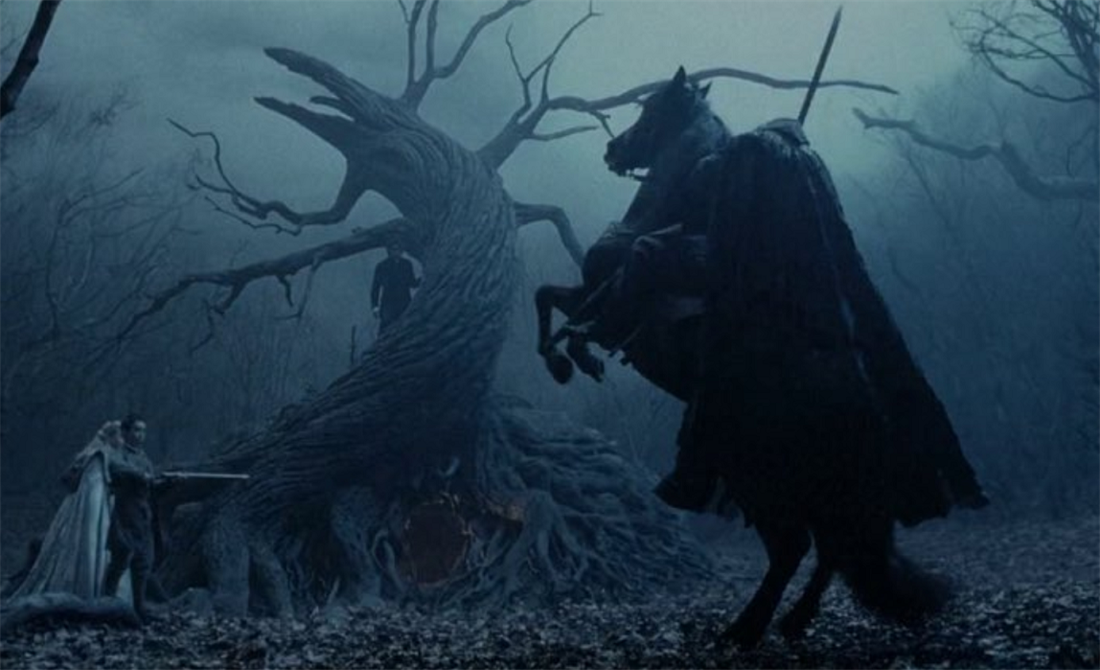





A headless CMS and the Headless Horseman are two completely different things.
A headless CMS is a content management system that separates the backend (where the content is stored) from the frontend (where the content is displayed), allowing for more flexible and scalable web development.
The Headless Horseman is a fictional character from Washington Irving's short story "The Legend of Sleepy Hollow". The Headless Horseman is depicted as a ghost who rides through the town of Sleepy Hollow carrying his own head under his arm.

In the context of "The Legend of Sleepy Hollow," the Headless Horseman being headless is meant to be frightening and supernatural. It symbolizes death and the loss of one's physical identity. The headlessness of the character adds to the horror and mystery of the story and contributes to its enduring popularity as a Halloween symbol.
In this context, there is no tangible benefit to being headless; rather, it is a storytelling device to create a frightening, otherworldly figure.
Flexibility: A headless CMS allows for greater flexibility in the design and development of a website or application. The separation of the frontend and backend enables developers to use any programming language and frontend framework they choose.
Scalability: The decoupled architecture of a headless CMS makes it easier to scale up or down depending on the needs of the project.
Performance: By separating the frontend and backend, a headless CMS can improve the performance and loading speed of a website or application, as the frontend only needs to retrieve the content it needs and doesn't have to load any extra, unnecessary data.
Integration: A headless CMS can be integrated with any number of other systems and technologies, making it easier to build complex, data-driven applications.
Future-proofing: A headless CMS enables organizations to adapt and evolve their websites or applications more easily, as the frontend can be updated or changed without affecting the backend.

In summary:
It's not appropriate to compare a headless CMS to a headless person as they are two very different things and the comparison would not make sense. A headless CMS is a technology used in web development, while a headless person refers to a person who is missing their head, which is a serious and sensitive matter. Making a comparison between the two would not be respectful or meaningful. ❤️
If though by headless horseman you are referring to your own website or web shop - behaving irattic, sluggish or zombie-like - you should definitely switch to a headless CMS instead for better performance and peace of mind. 👍🏻
Interested in using a headless CMS for your business website? Create a free developer account or contact our sales team.
Full disclaimer: The author of this article is affiliated with Easyweb, a Headless CMS built for business websites.